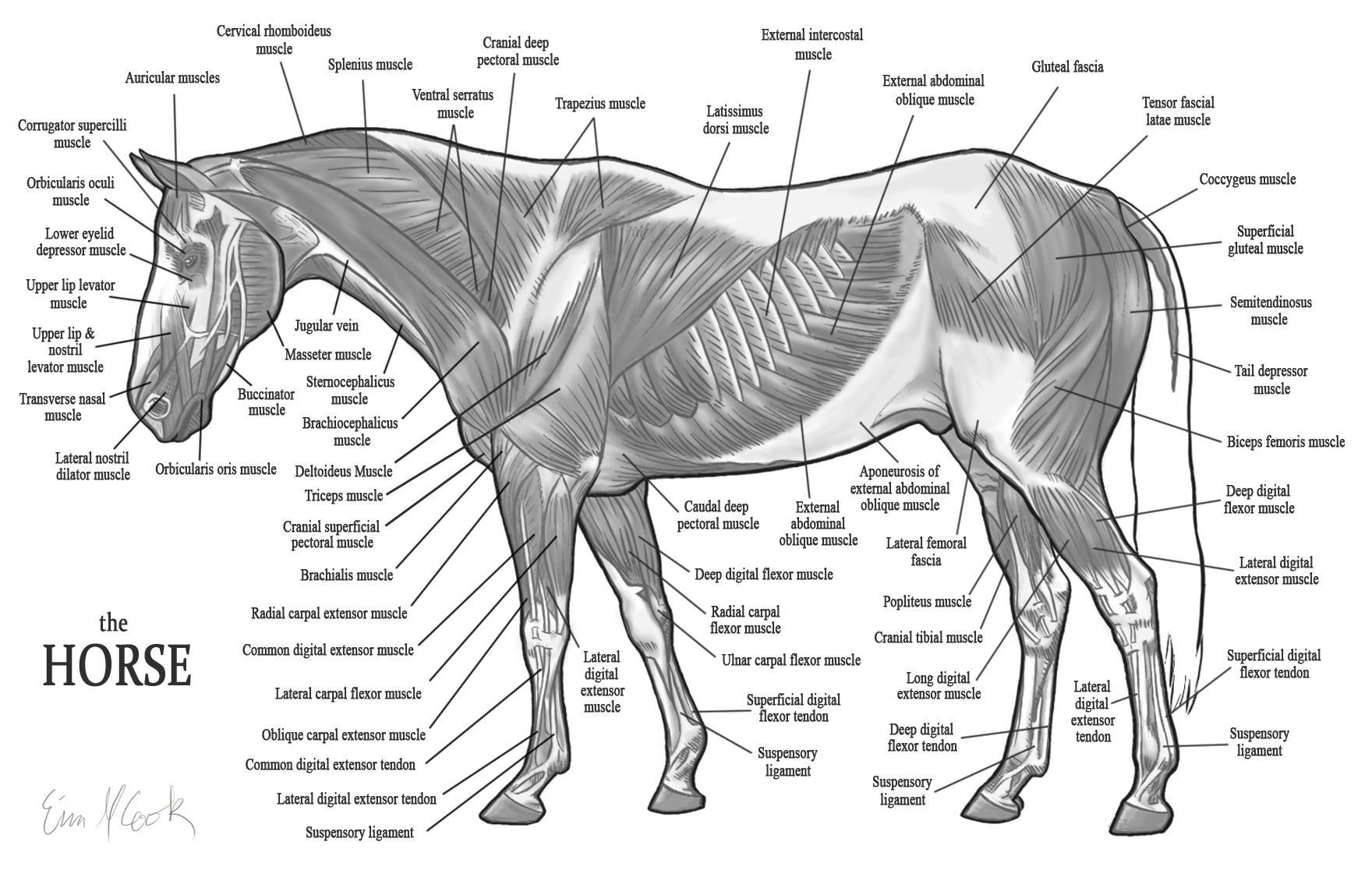
Horse Anatomy the Muscles by COOKEcakes on DeviantArt
Equine Spine and Head Anatomy Introduction Equine anatomy refers to the gross and microscopic anatomy of horses and other equids (donkeys, and zebras). This page introduces the Anatomy of Equine Spine and Head. + This is a course page funded by Plus online learning

Training Your Horse from the Anatomical Perspective. Part 2 Engagement
Head and Neck - Horse Muscle Anatomy. The muscles of the head and neck allow the horse to flex, extend and tilt its head. Key muscles include: Temporalis - raises the jaw. Masseter - closes the jaw. Sternomandibularis - opens the mouth by lowering the jaw. Brachiocephalicus - flexes the head and neck; turns the head side to side.

animal muscles Cerca con Google Horse anatomy, Horse behavior, Horses
The horse's musculoskeletal system consists of the bones, cartilage, muscles, ligaments, and tendons. Their primary function is to support of the body, provide motion, and protect vital organs. There are 205 bones in the horse's skeleton.
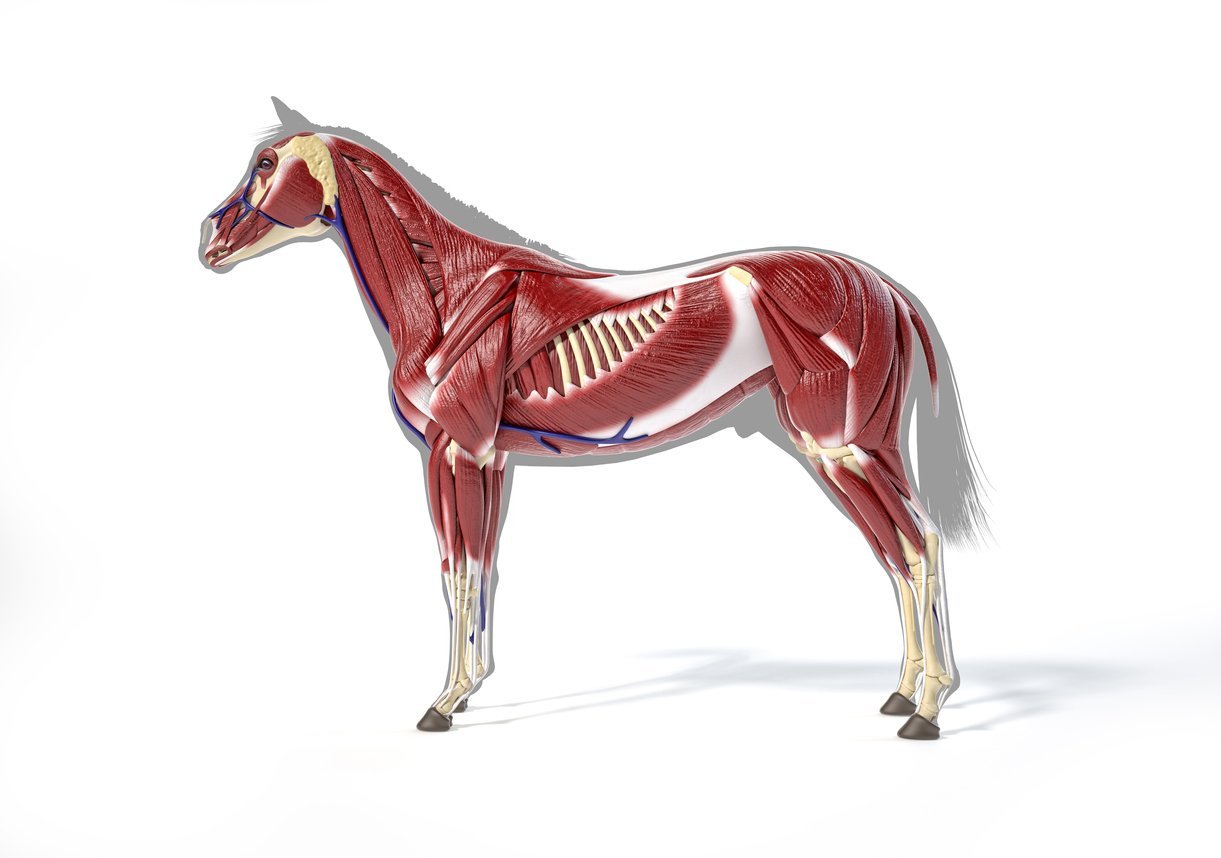
Complete Guide on Horse Muscle [Domestic & Sport]
Propulsive locomotor muscles, such as the gluteus, contain a predominance of fast-twitch type 2 muscle fibers, with the highest density of type 1 fibers located deeper within the muscle. In general, Quarter Horses and Thoroughbreds have the highest percentage of fast-twitch muscle fibers, 80-90%; Standardbreds have an intermediate number, 75%.
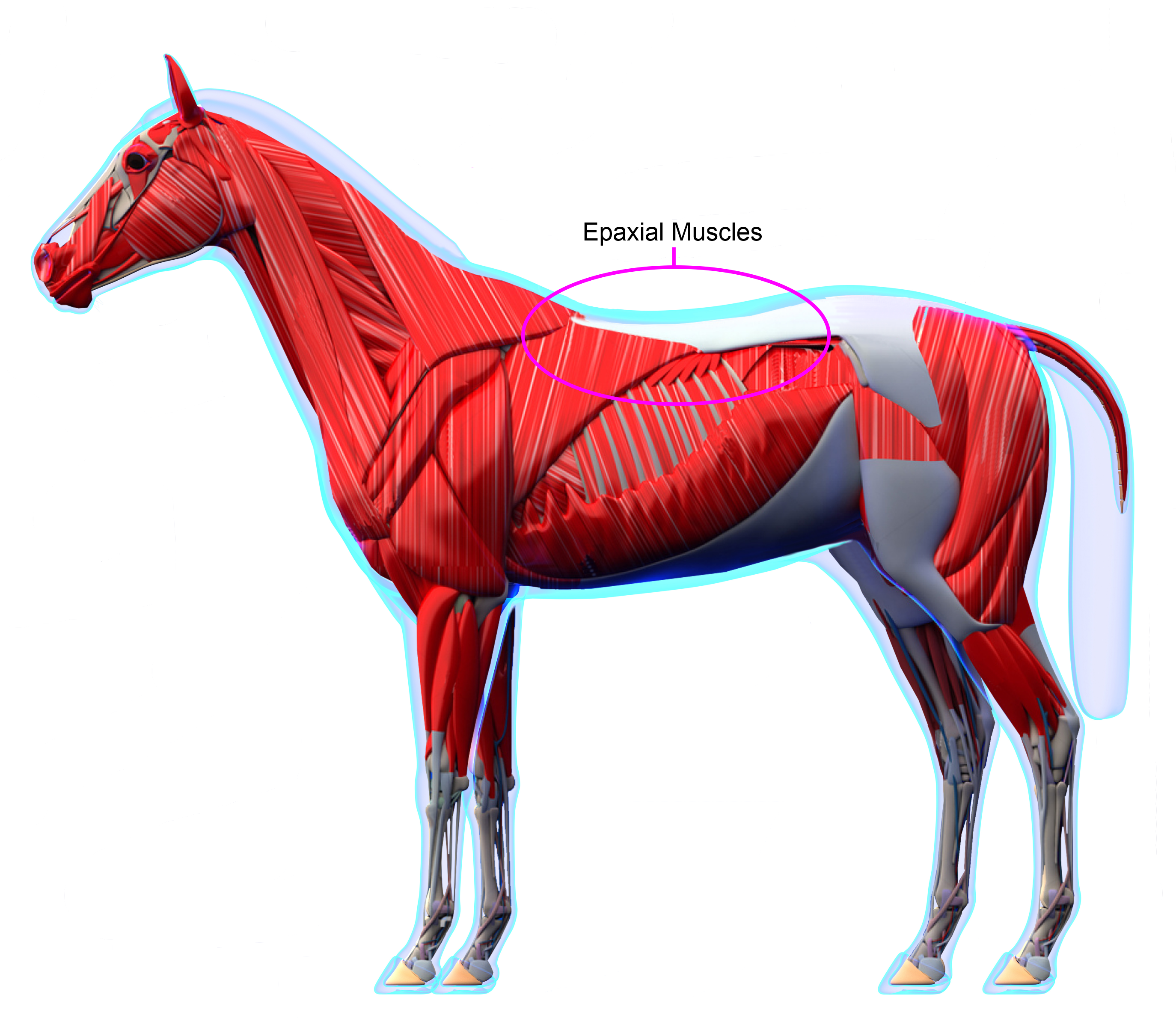
Why Saddle Fit Matters The Anatomy Under the Perfect Fit FLAIR Equine Nasal Strips
19. Understanding how muscles work is one of the most fundamental concepts that can influence how we ride and train our horses. Movement is created by the skeletal muscles pulling on the bones to operate the joints. Every bone is moved by a muscle. The muscles cross either one joint or several. The longissimus dorsi.
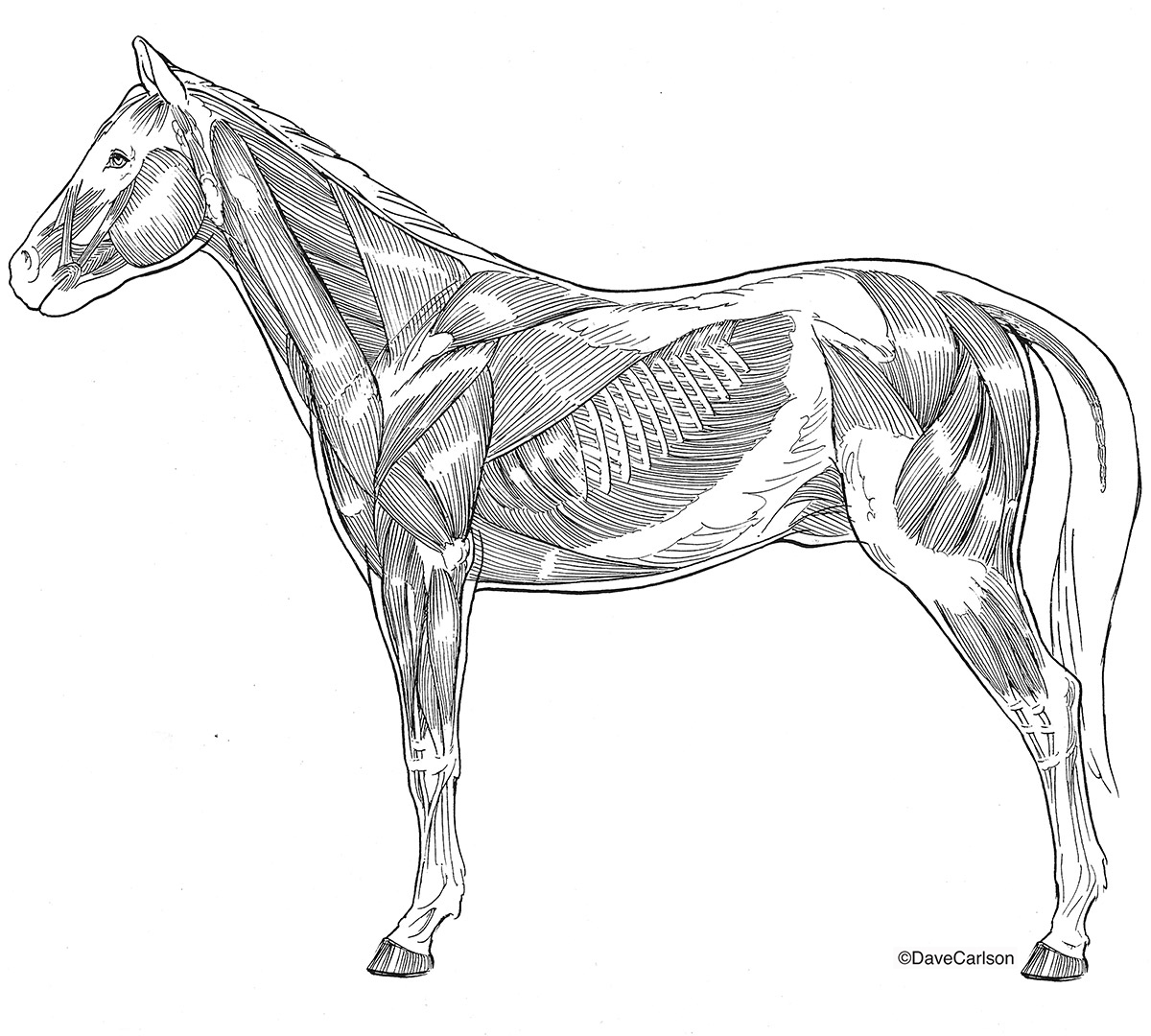
Horse / Equine Superficial Muscles Carlson Stock Art
In this article, we will also speak about the horse's skeleton and muscles. You should be able to draw a square on a proportionally built horse - however, as we prove later on while discussing each body part, in reality, horses differ from one another and usually stray from that ideal proportions.
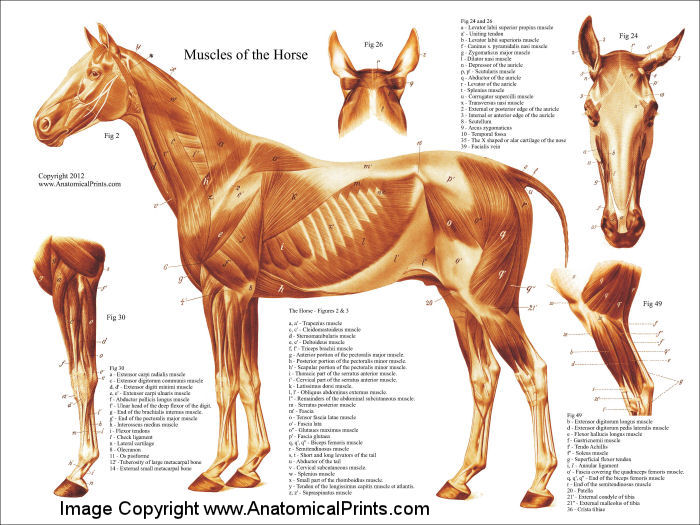
Horse Muscular Anatomy Poster
There are several types of muscles in the horse: the cardiac muscle (myocardium), the smooth muscles (which manage breathing, digestion, and blood circulation) and the striated muscles which connect the different bone segments together. Throughout its growth, the horse will develop its different muscles. They can be composed of type I fibers.
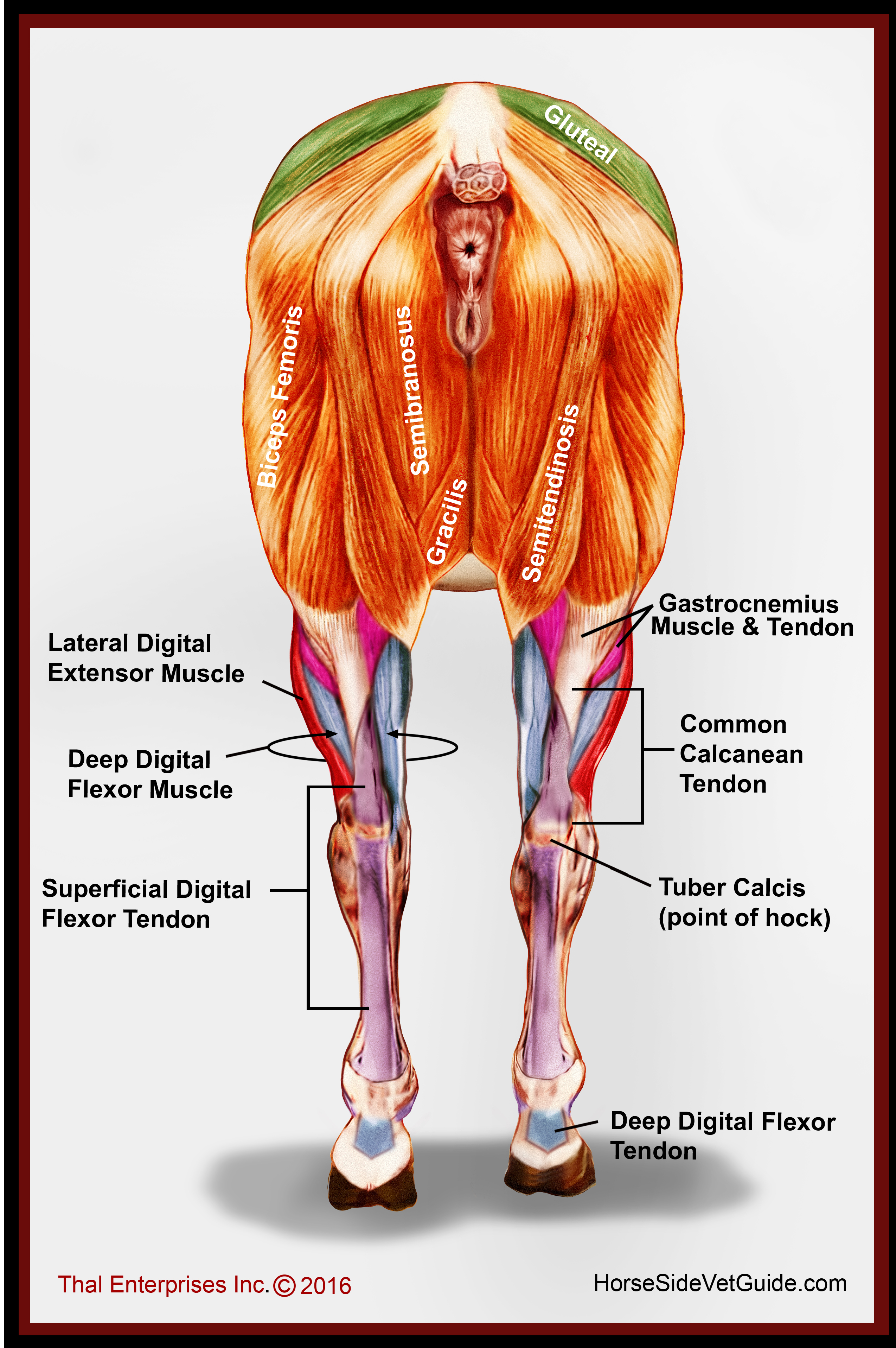
Database Record Viewer Horse Side Vet Guide
Muscles are tissues in your horse's body that allow your horse to walk, gallop, jump, and canter. In essence, horse muscles are the foundation of all movement, so it's key that you learn how to maintain animal muscle health if you want your horse to live his best life. Unfortunately, horses can develop muscle diseases known as myopathies.
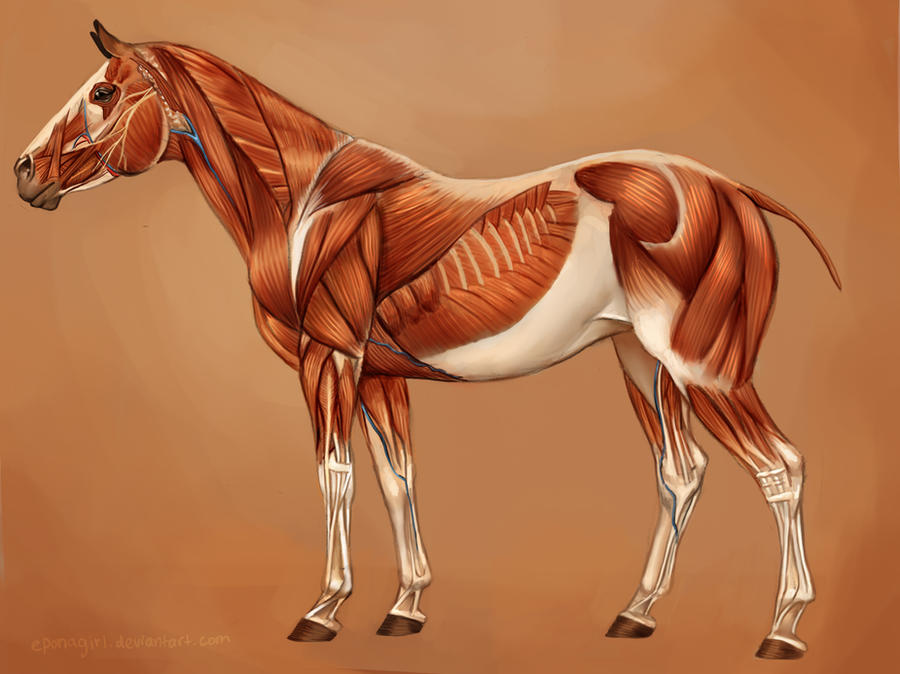
Horse Muscles Reference by EponaN64 on DeviantArt
Isometric contraction In movement a horse uses all three types of muscle contraction, but it's this isometric muscle activity that plays a huge role in the 'the 'arrow in a bow' concept.
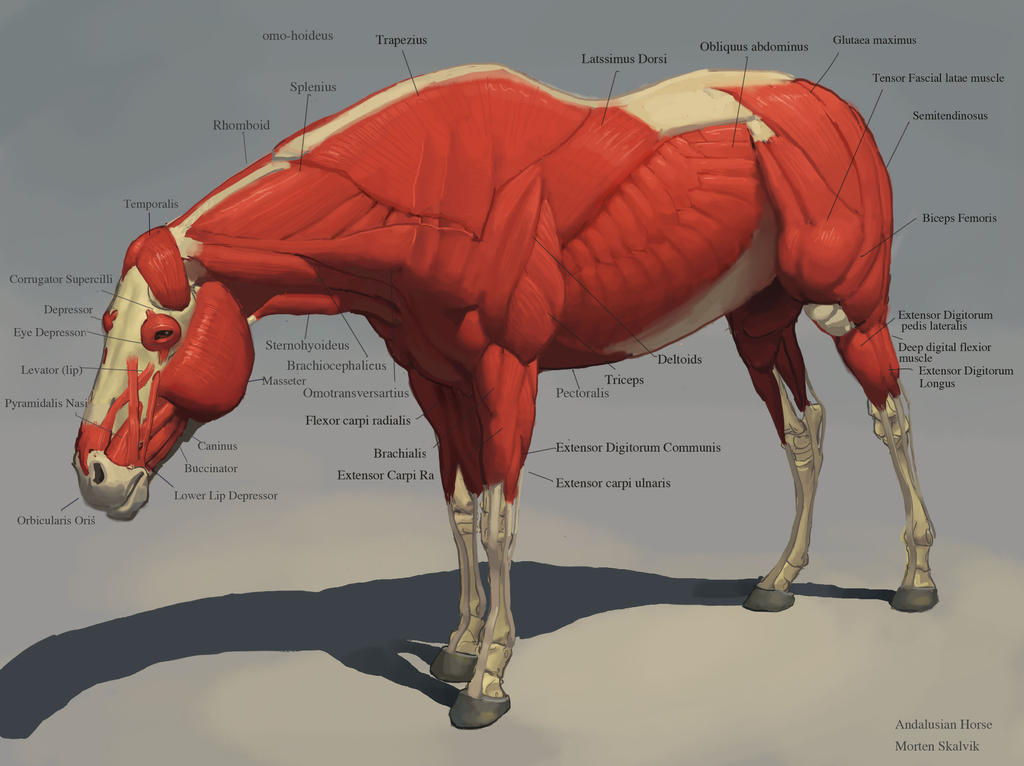
Horse Muscles by awesomeplex on DeviantArt
There are 3 types of muscles: Skeletal muscles. They are the ones connecting the different bone segments to each other. Smooth muscles. These muscles are not voluntarily controlled. Such as: digestive tract muscles, the esophagus and the blood vessels' wall. Cardiac muscles. This is an intermediary between the two previous types of muscles.

Equestrian and Horse Anatomy Deep Muscles
Skeletal muscles are responsible for posture and movement. They are attached to bones and arranged around the joints. Smooth muscle helps facilitate many involuntary processes in the body, such as the flow of blood (by surrounding arteries) and the movement of food along the digestive tract.

A4 Veterinary Poster Muscles of the Horse (Animal Anatomy Picture Pathology) Equine
To build muscle, a horse must have a Body Condition Score (BCS) of at least 5 (on the Henneke scale). What are the building blocks for muscles? For muscle development, it is important that your horse's feed contains the right amino acids and adequate energy. Muscles consist of muscle fibres, which in turn are made of proteins.

Equine deep musculature anatomy chart Horse anatomy, Equine veterinary, Muscle anatomy
Anatomy Pelvic hind limb bears 40-45% of the weight and provides the majority of propulsion for locomotion. Bones Os coxae The Tuber coxae and tuber sacrale both palpable Tuber ischii is located underneath the hamstrings Femur Greater trochanter has a cranial and caudal part for gluteal attachments (deep & middle)

Equine Superficial Muscular System Poster Muscular system, Equines, Equine veterinary
These are the muscles that attach to the bones of the skeleton and are responsible for movement. Horses have these type of muscles all over their bodies and they are what give them their strength and power. Smooth muscles are found in the walls of blood vessels and other internal organs.
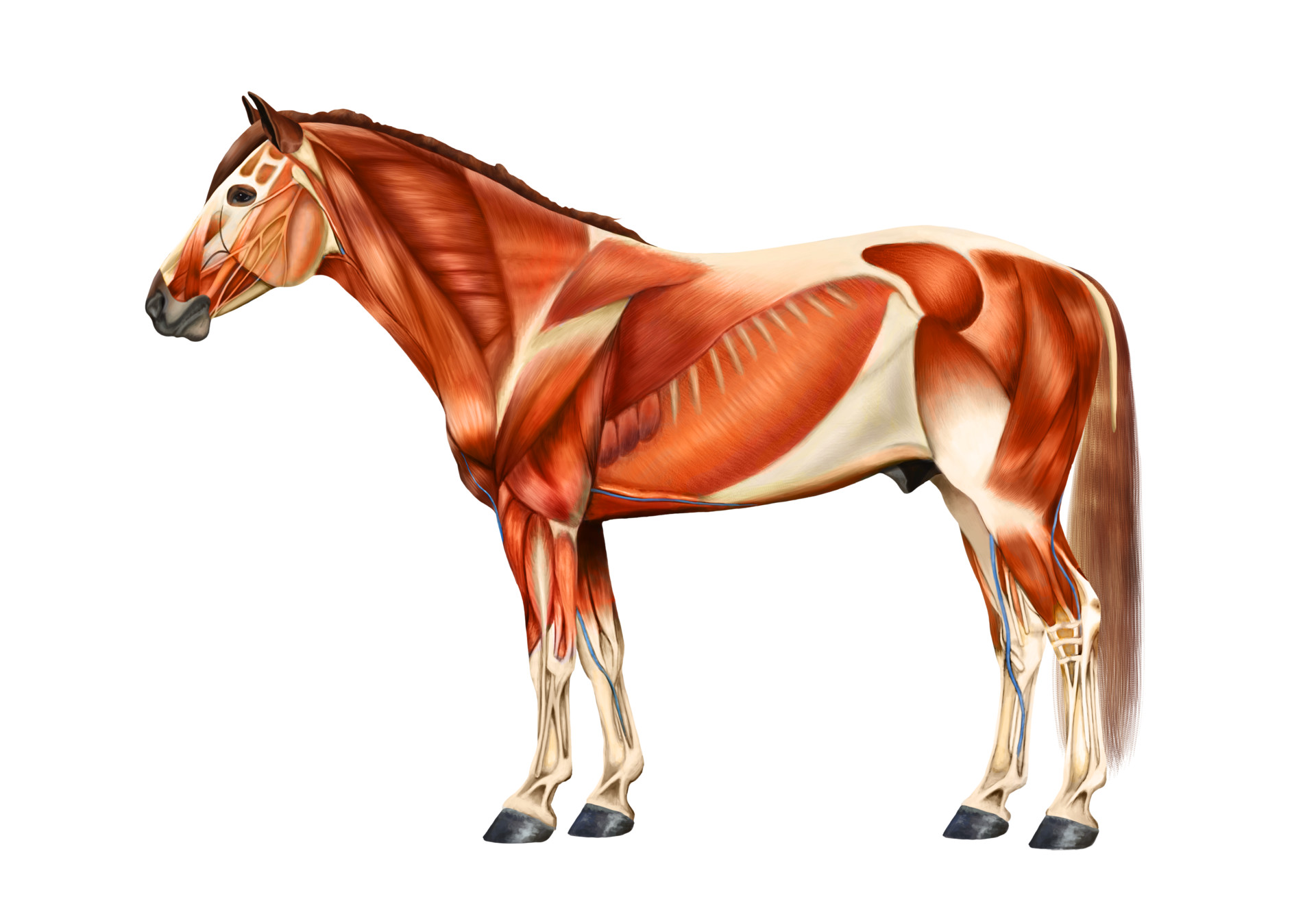
ArtStation Horse muscle anatomy
Understanding the Equine Muscular System November 24, 2021 Posted by Stacey Oke, DVM, MSc The horse's body possesses approximately 700 muscles that control movement. By understanding how.

Músculos de cuello, pecho, brazos, así como tendones de mano Horse anatomy, Horse care, Horse
Muscles of horse. The muscles of a horse are well developed and tightly attached to bones. You will find similar types of muscles in horse body as you found in cow or goat. I have published an article on an animal muscle that will help you understand and identify the muscles from the animal body. Here, I will show you some of the important.